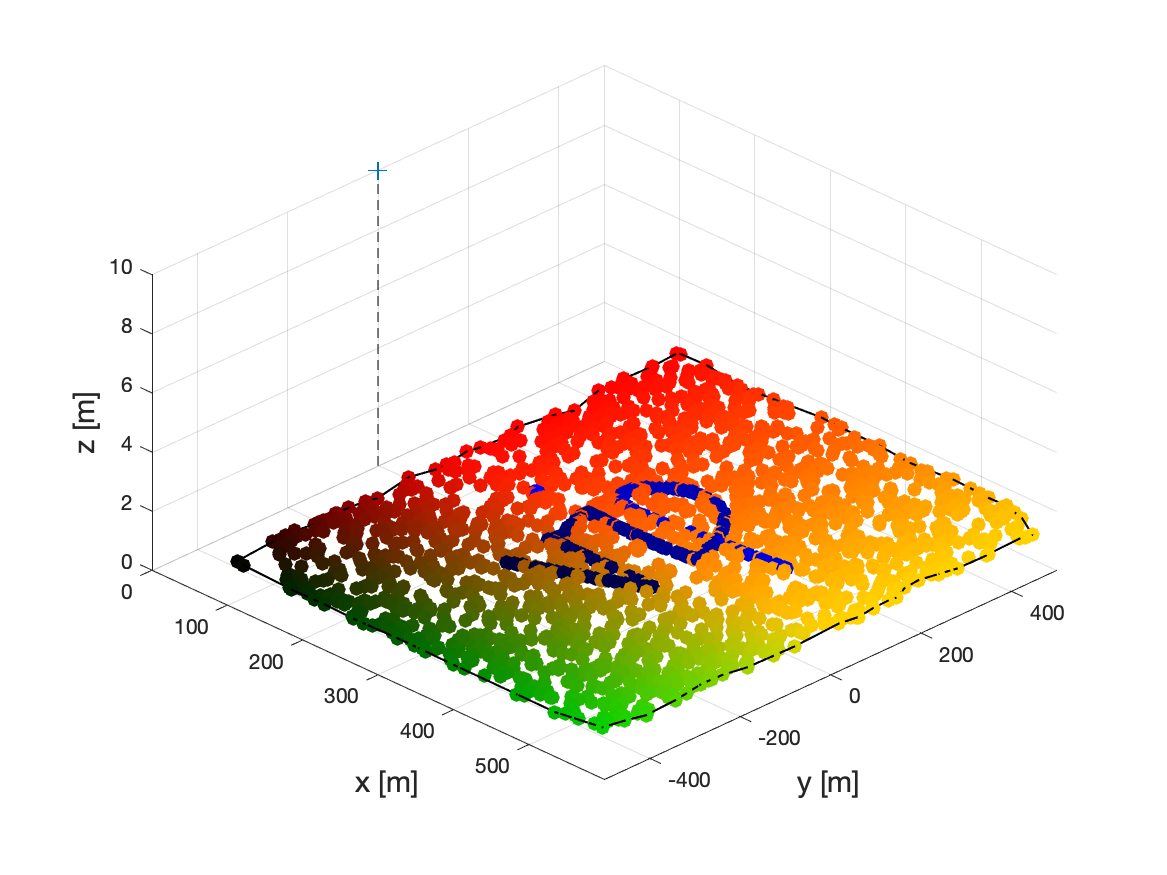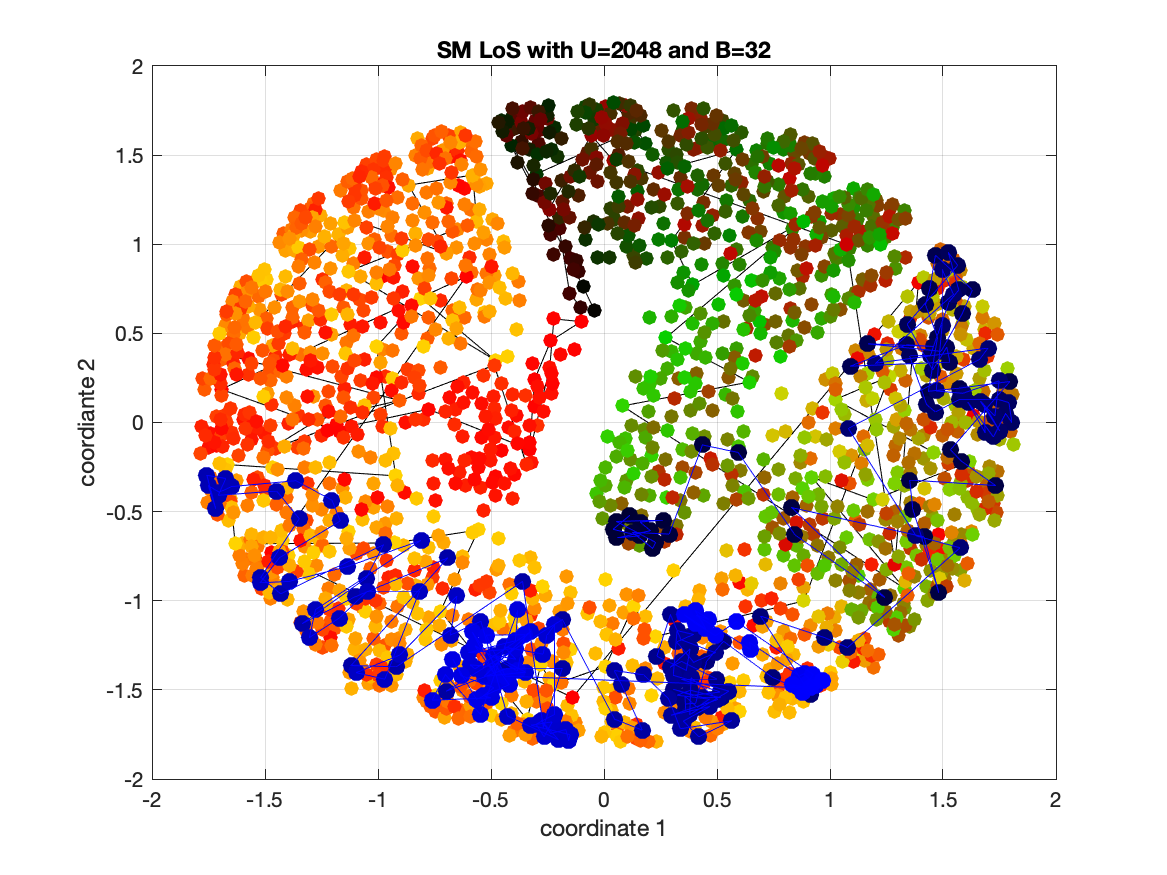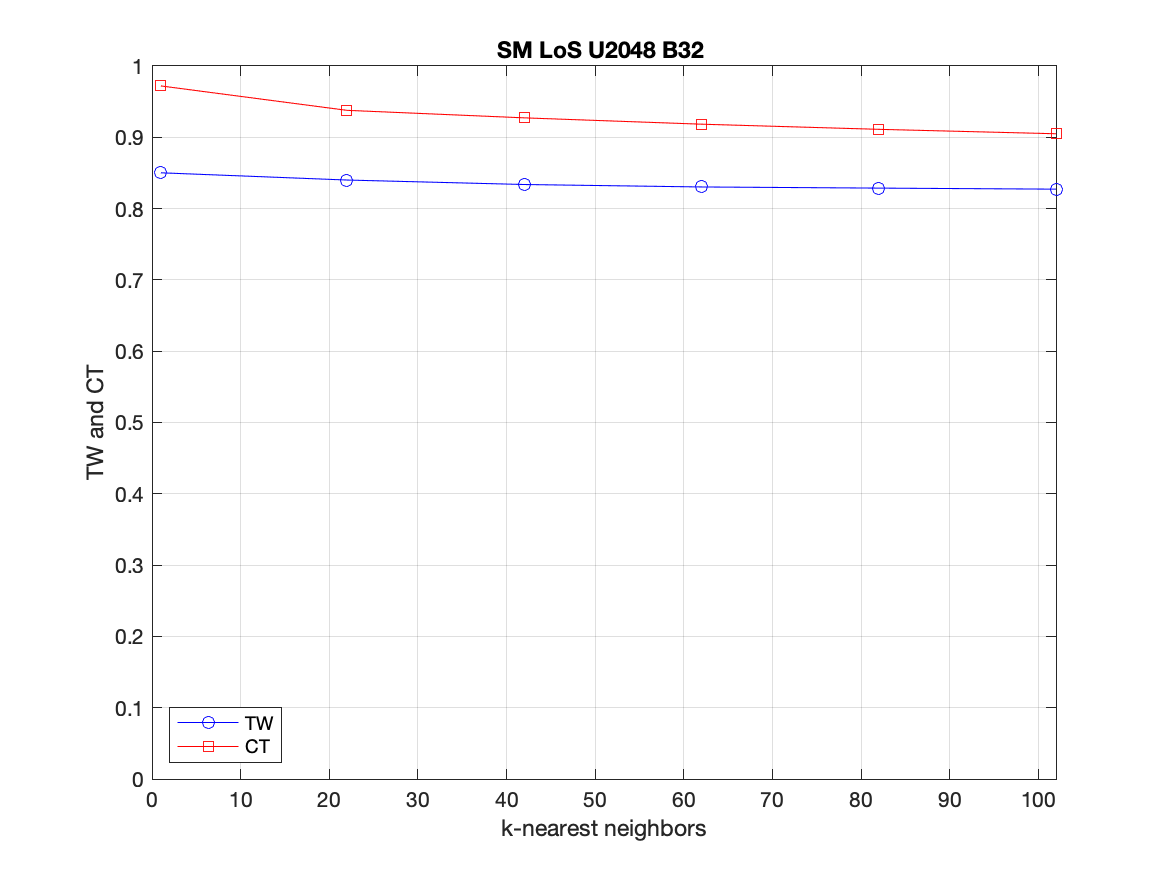Channel charting simulator with principal component analysis (PCA) and Sammon's mapping (SM) for line-of-sight (LoS) and non-LoS scenarios.
(c) 2016-2021 Christoph Studer, Emre Gonultas, and Said Medjkouh
e-mail: studer@ethz.ch, eg566@cornell.edu, sm2685@cornell.edu
If you are using this simulator (or parts of it) for a publication, then you must cite the following paper:
Christoph Studer, Said Medjkouh, Emre Gonultas, Tom Goldstein, and Olav Tirkkonen, "Channel charting: Locating users within the radio environment using channel state information," IEEE Access, Vol. 6, pp. 47862-47598, Aug. 2018
Erratum: The above paper claims to be using the plane-wave model for the vanilla line-of-sight channels; this is incorrect and a spherical wave model was used to generate our simulation results.
In case you decide to use the Sammon's mapping solver for a publication, then you must cite the original FASTA paper:
Tom Goldstein, Christoph Studer, and Richard G. Baraniuk, "A field guide to forward-backward splitting with a FASTA implementation," Technical Report, arXiv preprint: 1411.3406, Nov. 2014; available at https://arxiv.org/pdf/1411.3406.pdf
Simply run
channel_chartingwhich starts a simulation with U=2048 user-equipment (UE) locations and a B=32 basestation (BS) massive MIMO antenna. The simulator plots the following system scenario
and computes channel charts for PCA and SM. The channel chart for the vanilla LoS model with Sammon's Mapping (SM) should look as follows:
The simulator then computes trustworthiness (TW) and continuity (CT) performance metrics for a pre-specified set of neighborhood sizes and generates the following result:
We highly recommend you to execute the code step-by-step (using MATLAB's debug mode) in order to get a detailed understanding of the simulator.
- For the vanilla LoS channel model, you can freely select the system parameters. For the pregenerated Quadriga LoS (QLoS) and non-LoS channels (QNLoS), you can only use the following parameters: U=2048 and B=32.
- In order to generate your own Quadriga channel vectors, you need to first install the Quadriga software https://quadriga-channel-model.de/ . We do not provide assistance in doing so. However, we provide a script to generate channel vectors; the MATLAB script can be found in the
channelsfolder. - You can easily add your own (or modify our) channel charting functions below the
switch par.DRmethodstatement. - You can easily add your own (or modify our) channel-state information (CSI) feature extraction method.
- Version 0.1: studer@ethz.ch - initial version for GitHub release


